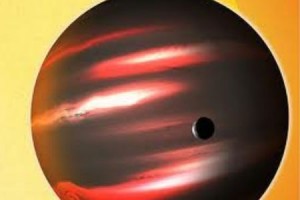The Darkest Planet in Our Solar System
A remote planet reflects less than 1 percent of its star’s light, making it much darker than coal or even black acrylic paint.
Some 750 light-years away, astronomers have found the darkest planet ever observed — darker even than coal – but scientists can’t explain why this is so.
The planet, which is the size of Jupiter, orbits its star at the relatively short distance of 3 million miles; because of this, it is about 1,800 degrees F, much hotter than any of the planets in our solar system. It is so hot that it emits weak infrared thermal radiation, like live coals.
 When scientists correct for this radiation, it turns out that the planet is reflecting less than 1 percent of the light of its star; in contrast, Earth reflects 37 percent of the sun’s light.
When scientists correct for this radiation, it turns out that the planet is reflecting less than 1 percent of the light of its star; in contrast, Earth reflects 37 percent of the sun’s light.
Dr. David Kipping, an astronomer at the Harvard-Smithsonian Center for Astrophysics, has analyzed the data and concludes that the planet may be absorbing its star’s light instead of reflecting it. Vaporous sodium or gaseous titanium oxide, both found in the planet’s atmosphere, may be partially responsible.
Read also Darkest Planet Found: Coal-Black, It Reflects Almost No Light

